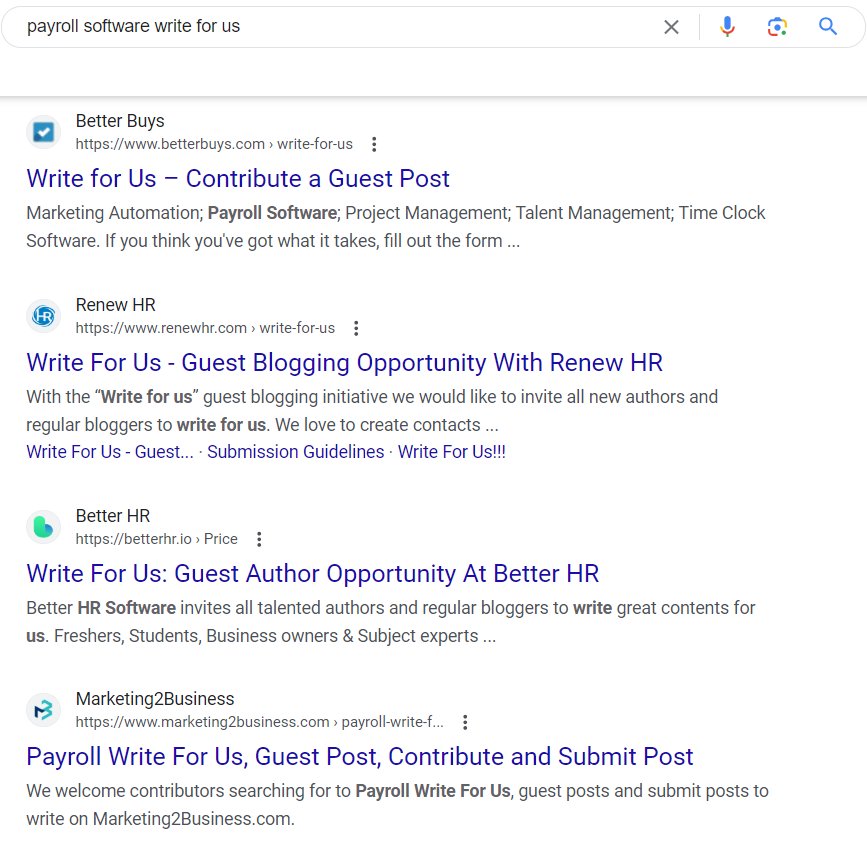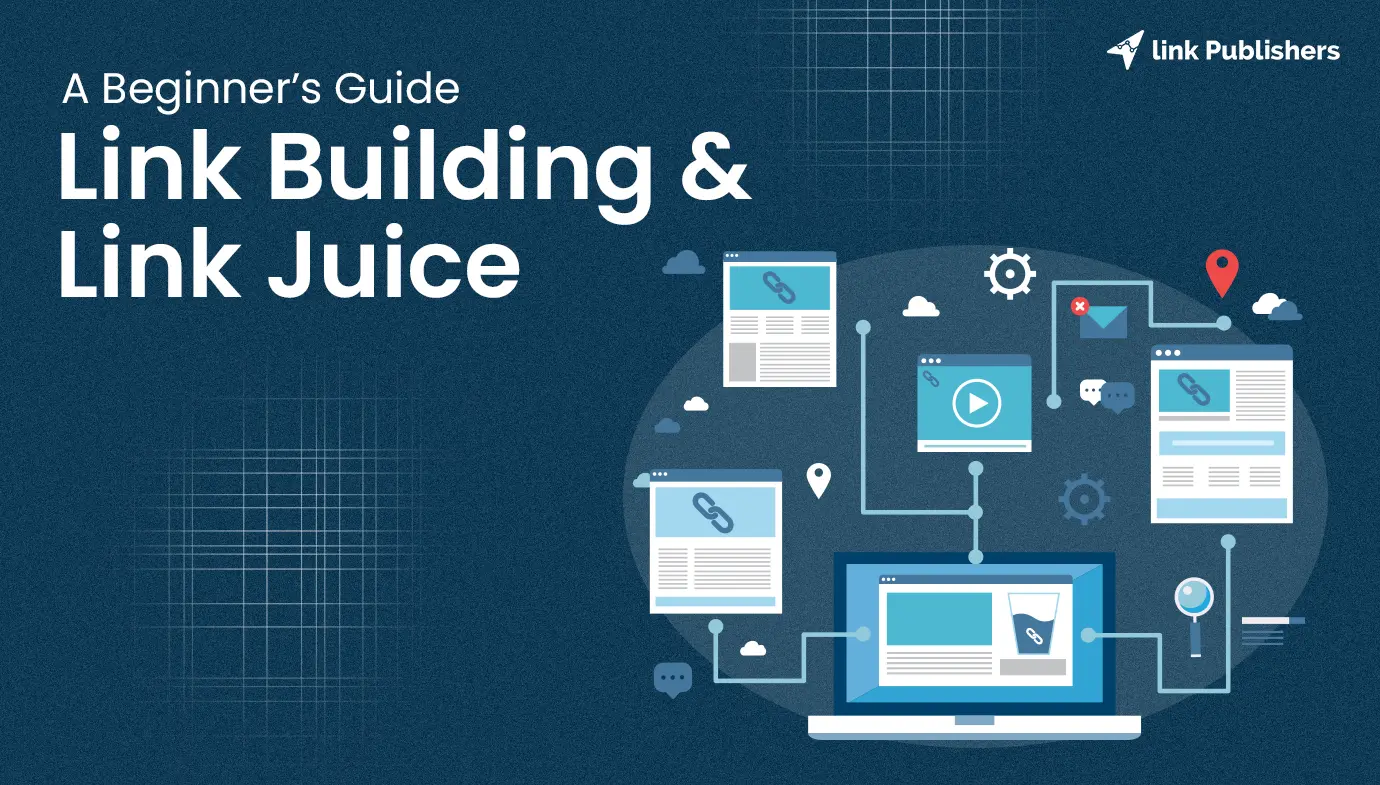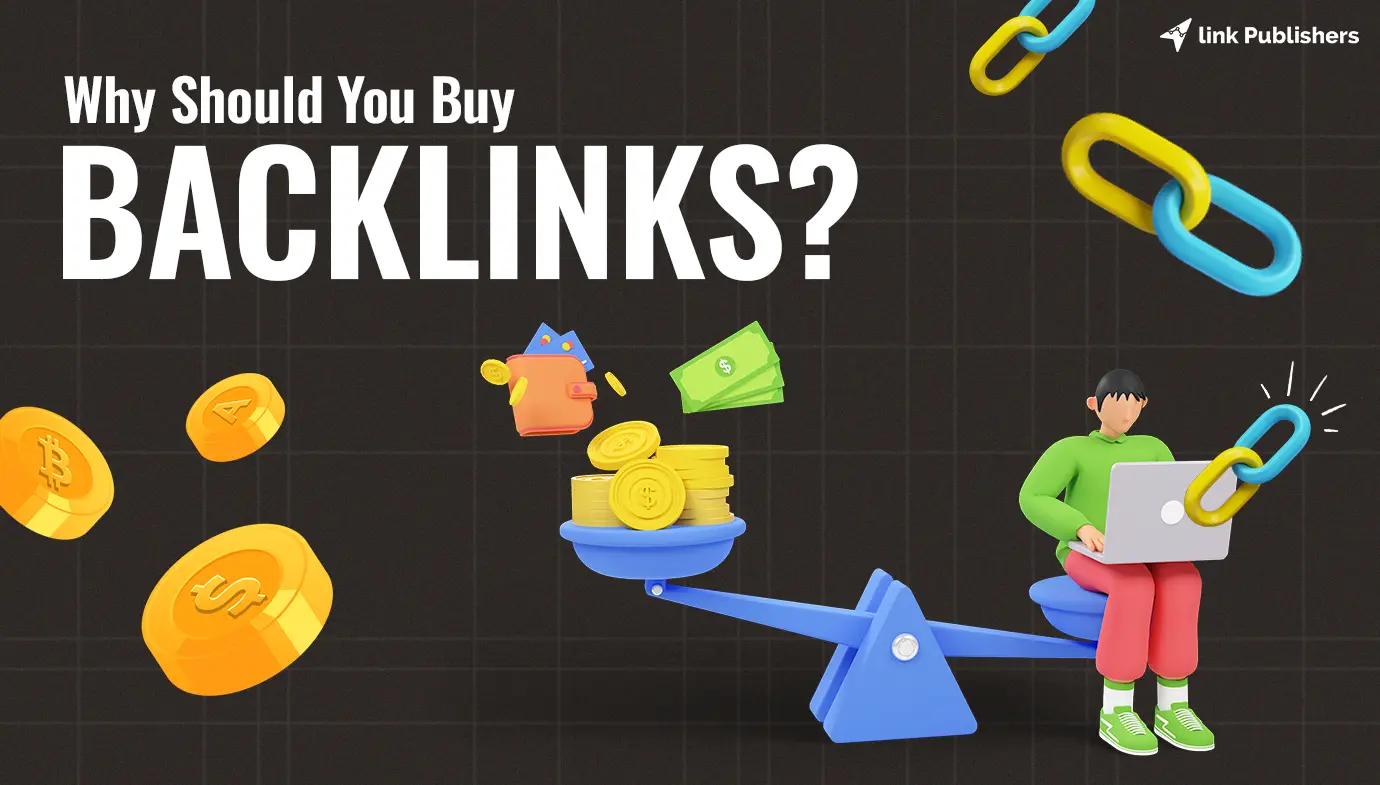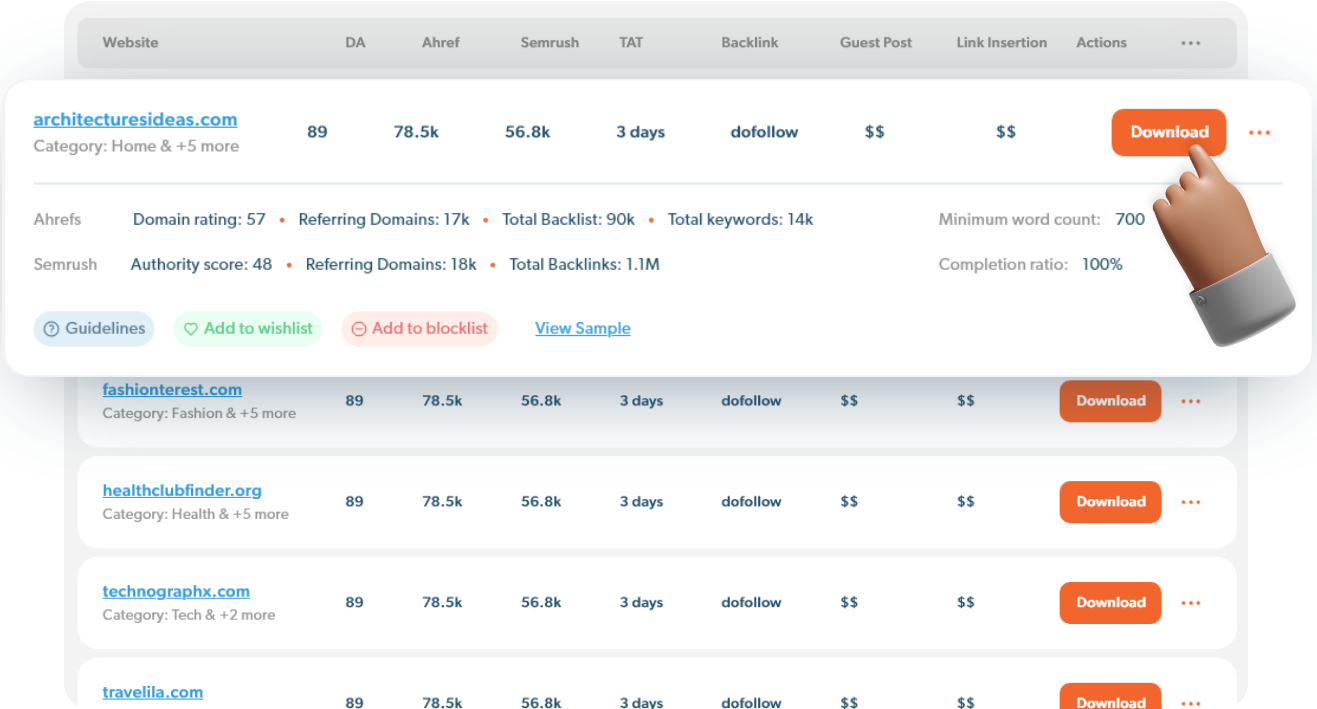Link building is an inevitable part of every successful SEO strategy. However, not everyone who implements link-building is able to make the most of this technique. The primary reason behind this is lack of a thorough understanding. However, this blog is there to help.
Below, we’ll discuss everything you need to know about link building, from what it is, its importance, and the evolution of link building over the years, to misconceptions around link building, link building techniques, and link building best practices you must follow.
So, read in full.
By the end, you’ll have all the information you need to leverage link-building for your business.
What is Link Building, and Why is it Important for SEO?
Link building is the process of getting other websites to link back to your website. The primary goal here is to increase a page’s search ranking by acquiring links from high-authority websites using a variety of link-building strategies (more on this later).
Let’s learn why link building is important for SEO:
Direct Impact on Search Rankings
Backlinks are one of the major factors search engines consider when deciding which website to rank on the 1st page of the SERPs. In fact, the number 1 search result in Google has around 3.8 times more backlinks as compared to the pages ranking at 2nd-10th position.
What happens is search engines consider backlinks as a vote of confidence in your content. So, having a strong backlink profile, i.e., having more diverse high-quality backlinks, increases the chances of you ranking higher in the SERPs. And when you rank higher, you can drive massive organic traffic to your site.
Building Website Authority
When multiple high-authority websites link to your content, it transfers the link juice/value to your website. This also sends a positive signal to search engines about the value, credibility, and trustworthiness of your content, boosting your website authority.
Exposure to a Wider Audience
In addition to driving organic traffic to your website, link building also brings referral traffic.
How?
When you publish content on websites/platforms that get decent daily traffic, you basically expose your content to a wider audience. And when the viewers click the link in the content that redirects them to your website, you generate referral traffic.
Establishing your Brand as an Industry Leader
From a reader’s POV, backlinks will redirect them to a website that is relevant to the content they’re reading or adds more value.
And when readers actually get what they expect from your website, it boosts your reputation, which helps establish your brand as an industry leader.
Evolution of Link-Building Strategies

Link building, which we see today, is vastly different from what it was years ago. Let’s see where we started and where we stand today in terms of link-building strategies:
1. Web Rings and Link Farms
Webrings are considered the grandfather of link building. In this link-building strategy, the website owners publish links to related websites on their own websites/properties.
This strategy was pretty popular in the mid-1990s when the internet was new, and there wasn’t much competition for the attention of the audience. While web rings are used even today, they aren’t as popular as other modern techniques.
Soon after web rings became popular, link farms entered the picture. Link farms are a group of websites that link with each other to boost visibility in search engines.
2. Link Exchange
Link exchange or reciprocal link building was a link-building strategy that worked like the barter system. A website ‘X’ agrees to include a link to the website ‘Y,’ and in return, the website ‘Y’ includes a link to the website ‘X.’ This exchange of links was performed with the hope of increasing the number of links and, thus, ranking.
While this method worked well in the early days of SEO, too many link exchanges were seen as manipulative by search engines such as Google. And this is true even today.
3. Email Outreach and Website Directories

Early email outreach was different from what it is today. Marketers used to craft emails one by one just for a link. However, blog outreach emails made the process of sending backlink requests to authoritative websites as simple as sending a single mass email.
Around the same time, website directories also started to gain traction. Basically, these directories listed several websites segregated by multiple categories.
Website owners could submit their websites to any popular directory, including Yahoo! Directory, DMOZ, and AOL, to name a few. And the directory would offer a backlink in return. This allowed users to identify websites easily, improving website visibility.
However, as time passed and search engines became more complex, website directories lost their charm.
4. Paid Links (21st century Link Building)
Over time, numerous search engines and directories popped up, offering a whole range of options to internet users to find stuff. And this made it tough for marketers to grab the attention of prospective searchers or readers.
However, paid ads emerged as a viable solution. Paying for links allows you to secure a guaranteed placement on high-ranking websites.
While this method is used even today, several SEO experts choose to stay away as it technically violates Google’s Webmaster Guidelines.
5. Guest Blogs
Guest blogging, although one of the oldest link-building strategies in SEO, is still widely used by marketers.
You need to identify high-authority websites in your niche that accept guest post submissions, go through their guidelines, and create a guest post (with a link) to be published on their website.
6. The Broken Link Method
In the broken link method, you need to find dead or broken links on reputed websites relevant to your industry.
You can then offer the website owners to replace the broken link with a working one that redirects readers to your website. As the website owner is getting a broken link fixed, they’ll be happy to accept your request.
7. The Skyscraper Method
This is one of the most advanced link-building strategies. You need to identify your competitors, review their content, and create something substantially better.
Once you create a far better content piece, you must reach out to the publisher and ask them to replace your competitor’s link with yours.
To make the most of this link-building strategy, your content needs to be visibly better than that of your competitors. Also, you must create an extremely convincing pitch, as popular publishers get hundreds or even more emails daily.
Recent Updates in Search Engine Algorithms
Google frequently releases new updates in its search engine algorithm updates. However, the most notable ones include the following:
The May 2022 Core Update:
This update was probably the first major update in 2022 meant to improve the quality of search results. It stressed the importance of user experience and benefitted websites with higher rankings that offer a good user experience.
The September 2023 Helpful Content Update:
This update from Google emphasizes the importance of EAT (Expertise, Authoritativeness, and Trustworthiness) and refines the Helpful Content Update rolled out by Google in December 2022.
Google’s December 2023 Core Update:
This update focuses on enhancing Google’s ability to identify and rank helpful content. So, websites creating high-quality and informative content are likely to witness a boost in their search rankings.
What do these updates in Google’s search algorithm mean for link builders?
Based on the recent updates, link builders must:
Prioritize Quality over Quantity:
Marketers must focus on SEO link-building strategies that involve earning links from reputable and high-quality sources and not getting as many links as possible from low-quality sources.
Align with EAT:
Your content must align with the EAT principles. This will improve your organic ranking and boost the acceptance rate of your guest post submissions.
Create Exceptional Content:
Your content should be valuable, original, insightful, and, most importantly, link-worthy.
Diversify Link Profile:
Always make sure your link-building strategies don’t focus on a single source. You should get backlinks from partnerships and industry directories, among other sources, to diversify your backlink profile.
Stay Updated:
keep an eye on the updates as they’re launched and modify your link-building SEO link building strategies accordingly. Also, monitor site metrics, analyze your competitors and ensure all your strategies align with Google’s guidelines.
Common Misconceptions About Link-Building
Here are the top misconceptions marketers have about link-building:
Backlinks Are a ‘Top’ Google Ranking Factor
John Mueller, a Senior Webmaster Trends Analyst, and Search Relations team lead, stated that Google’s ranking factors are dynamic. Google employs different algorithms to determine what results to show based on the query intent.
However, it’s evident that pages in the top three search results have many backlinks. The important question is, are these pages ranked based on the backlinks alone? To be honest, no one knows for sure.
So, does that mean links are not at all important? No. While we don’t know for sure if links are a top factor, they definitely play an important role.
Ideally, one should consider link building an important part of their SEO strategy and, at the same time, focus on other aspects as well.
The Penguin Penalty
There is no such thing as Penguin Penalty. Penguin is an algorithm designed to fight spam and manipulative link-building techniques.
A common misconception about this algorithm is that you need to manually remove the spammy links. However, this is not always the case. If you have control over the links, you can manually remove them. Otherwise, you can use a disavow tool for the same.
PA or DA Define the Link Quality
Marketers often consider DA or PA as the only factors for determining the link quality. However, this is far from the truth.
DA or PA are 3rd party metrics that can be tempered with and give only a vague idea of how a website compares to others. DA is not a ranking signal. It does not give you complete insight into how good a website is for link building.
Now, you may think, should we trash DA completely? Nope. The problem here is relying on DA alone to determine the quality of a link. In the quest to identify high authority links, marketers focus solely on DA.
And because of this, they end up losing several opportunities. The goal here is to focus on additional factors along with DA to determine link quality.
Here are the characteristics of a quality link:
- The linking domain receives heavy monthly traffic.
- The anchor text is contextual and descriptive.
- The website has a strict editorial process to ensure content quality.
- The linking domain posts content relevant to your business.
Asking Someone for a Link Is Spammy
It’s common to see experts saying you could attract a manual action if the website you’re getting a link from frequently exchanges links.
However, manually reaching out for backlinks from a reliable publication or directory and reclaiming citations is not equivalent to link exchanges. And if it is, it’d mean resource link building and broken link building are also manipulative.
High Link Velocity Contribute to Manual Penalties
Marketers think that if a single page recedes tons of backlinks, it would negatively impact the ranking and could even attract manual penalties.
Let’s say you publish an extremely high-quality post that is also shareable. Now, over time, people share your content, and your visibility improves.
And eventually, you generate thousands of natural backlinks. Does that mean Google will penalize you? Of course not. Otherwise, it’d defy the whole purpose of link-building.
The point to note here is that high-velocity links from poor sources, such as content networks and spammy directories, are against Google’s guidelines. Avoid doing this, and you won’t see a penalty coming your way.
Advanced Link Building Techniques
Here are some of the best link-building strategies or techniques that can help you stand out in the crowd:
Influencer Outreach
Influencer outreach is the process of identifying the popular influencers in your industry for collaboration. You either pay the influencer or allow them to use your product for free for a set duration in exchange for a backlink in the content posted on their website or social media page.
This strategy is useful as influencers in your niche already have an audience that trusts them. So, if the audience sees a reliable source (influencer) promoting your product, they’d want to check it out. This will improve the conversion rate.
Content Syndication
Content syndication is the process of re-publishing existing content on 3rd party websites or platforms. Any type of digital content, from infographics, press releases, videos, news articles, or images, can be syndicated.
This technique is mutually beneficial for both the content owner and the website/platform where the syndicated content is being published.
For instance, as the content owner, you get to push the same content piece in front of a wider audience, and the website owner gets quality content for free.
Let’s say you have a content piece published on your website which you find valuable. You can approach external publishers or bloggers who allow syndicated blogs to be published.
Or you can post an excerpt of your content on your social media channels. An even better way to build links using content syndication is by approaching influencers and asking them to share your already published content.
Social Media Engagement
Having active social media channels can go a long way. Not only does this help improve brand awareness, but it also helps you build more links.
Let’s say you post a highly shareable infographic on Instagram or Facebook. If your account receives regular engagement, you’ll find plenty of comments and shares under your post. And this will positively impact your search rankings.
Also, social media channels are a hub for content creators, journalists, bloggers, and websites that offer guest posting opportunities. If you stay active on your social media handles, you can network with fellow creators and explore more link-building opportunities.
White-Hat vs. Black-Hat Link Building
You can divide links or link-building strategies into two broad categories: white hat and black hat. Let’s learn which ones you should follow:
White Hat Link Building
White hat link building is when you build links using tactics/techniques that do not violate Google’s guidelines. While following white hat link-building techniques for building backlinks takes time, it is ethical and doesn’t attract any penalties from Google.
Common white hat link-building techniques include HARO, digital PR, creating linkable assets, guest posting, niche edits, resource pages, etc.
Black Hat Link Building
White hat link building is when you use unethical methods for link building that violate Google’s guidelines.
While these methods tend to offer quick results, they’re often caught by Google’s advanced search algorithms and could result in heavy penalties.
Common black hat link-building techniques include PBNs, link farms, spamming blog comments, purchasing poor-quality guest posts, and more.
Top Link Building Best Practices
With the evolution of link-building strategies over the years and continuous scrutiny of search engines, it’s important that link builders consider these best practices in mind:
Get Creative
Everyone can follow the traditional content mediums. To stand out in the crowd, you need to get creative and try new content mediums.
While chatbots can create content, they cannot replicate creativity. That’s where you can leverage the human mind. To outshine your competitors, focus on creating new tools and research papers with shareable infographics, graphs, and stats.
Capitalize on Trending Topics
Try to identify trending topics and capitalize on them. Whenever a topic, preferably news trends on news websites, you can choose a unique angle and create content around it. And as the topic is already trending, it’s likely to help you generate backlinks naturally.
You can also approach relevant journalists or websites that accept submissions with your content. And if the content is trending by the time you approach them, they’ll be happy to accept your content.
Tap Into Influencer Networks
Influencers are not limited to just Instagram. Anyone from a blogger or editor to a CEO of an organization is an influencer if they have a relevant audience.
By approaching relevant influencers in your industry, you can create highly valuable content that can generate backlinks on its own.
Moreover, you can directly approach influencers with a request to promote your product or service in exchange for a monetary benefit or free access to your product/service. And in exchange, you can ask them to publish a blog or post on their social media channel with a link to your website.
By keeping this strategy in mind, you can generate more backlinks and get more conversions, as people like buying from a person they are familiar with.
Build Relationships
The market is getting saturated with each passing day. And as link building is often associated with spam, it’s becoming harder and harder for link builders to secure backlinks via outreach.
However, building relations and getting a little personalized with your messaging can help. For instance, instead of directly emailing the website owner with your request, connect with them on LinkedIn or Twitter.
Engage with their content and show them you’re an actual human. This will help you build genuine relations, increasing their chances of accepting your request.
Tools for Effective Link Building
Here are the only tools you need for effective link-building:
1. Google

While you may not think of Google as a link-building tool, it is one of the best ways to find link-building prospects. Just by using simple search operators, you can identify relevant link-building opportunities in seconds. Here’s a search operator you can use:
[keyword] (intitle: resources OR intitle: resource) (inurl: resources OR inurl: resource)
2. Ahrefs

With over 3 trillion live backlinks in their backlink index, Ahrefs is probably one of the best tools for backlink research: a task every backlink builder performs almost daily. It comes with numerous other tools, including Content Explorer, that allow you to explore new link-building opportunities.
3. Hunter.io
One of the most important aspects of link building is identifying the emails of the prospects you want to pitch to. And that’s when Hunter.io comes into the picture. Just by entering the full name of the person and the company domain, you can find the email of the person. Yes, it’s that simple.
4. NeverBounce

If you’re planning to send out bulk emails, you need NeverBounce. This tool helps you verify and clean email lists to minimize bounces and maintain the good health of your outreach campaigns.
Just upload the list of emails, and it’ll tell you which emails are valid and which are not, enhancing the success rate of your campaigns.
5. Instantly.ai

Instantly.ai is one of the best email outreach tools that you can use to create, manage, and track your email outreach campaigns. This tool is necessary if you want to scale your email outreach efforts and manage everything using a single platform.
6. HARO
HARO, or Help a Reporter Out, is a service that connects journalists with industry experts. Once you sign up on this platform, you’ll get emails from individuals requiring a guest post.
You need to send an impeccable response to them quickly. And if your pitch gets chosen, you’ll get a mention or a backlink from the website.
Future Trends in Link Building
AI in Link Building
AI is revolutionizing every industry without an exception. And it won’t be long before you have automated AI tools that find you guest posting opportunities with 100% accuracy. Also, AI is expected to predict the success of your link-building strategy, diminishing the need for A/B testing.
Importance of User Experience
Google is very well aware of people generating content just for the sake of it. No wonder it has always been firm on the user experience the content provides. Although Google has strict guidelines about UX, they might become even stricter in the years to come.
Personalization
More and more people are using AI chatbots to create emails and pitch bloggers or website owners. However, this creates a more hostile environment for marketers, especially the ones taking the time to write emails from scratch.
Personalization could be the solution to this problem. The more personalized you can be, the higher the chances of your emails getting opened.
Paid Links are Legal
While this was a violation once, paid links are now legal. Here’s what Google says:
“Google does understand that buying and selling links is a normal part of the economy of the web for advertising and sponsorship purposes.
It’s not a violation of our policies to have such links as long as they are qualified with a rel=” nofollow” or rel=” sponsored” attribute value to the tag.”
So, as long as you use the right tags to declare the use of paid links, you’re good to go, and you won’t receive any violation from Google.
Diversity
With Google becoming more diverse with time, it is expected to choose websites with a strong backlink profile to rank higher. So, link builders should focus on getting backlinks from different sources and creating a diverse backlink profile.
Wrapping Up
You’re finally equipped with all the information you need to launch a successful link-building strategy. However, make sure to know that link building is not a sprint. It’s a marathon that takes time, effort and patience. Don’t expect results as soon as you launch your campaigns.
Just stay consistent, focus on white hat link-building techniques, stay updated with the latest search algorithms, and follow link-building best practices, and you’re good to go!







